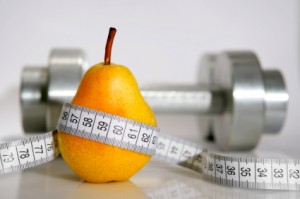 The blessed month of Ramadan is my favorite time of the year. It is a month of worshiping Allah, gathering at the masjid, seeing family and friends, and so much more! However, it is also a month where you can potentially lose a lot of muscle tone and put up a roadblock to your fitness goals. When people lose weight in Ramadan, it is usually water weight and muscle tissue that is lost; not fat. The goal for Ramadan is to try and maintain your current fitness level and muscle tissue.
The blessed month of Ramadan is my favorite time of the year. It is a month of worshiping Allah, gathering at the masjid, seeing family and friends, and so much more! However, it is also a month where you can potentially lose a lot of muscle tone and put up a roadblock to your fitness goals. When people lose weight in Ramadan, it is usually water weight and muscle tissue that is lost; not fat. The goal for Ramadan is to try and maintain your current fitness level and muscle tissue.
You have to ask yourself a few questions to determine what your perfect exercise regimen should be during Ramadan.
- How were you exercising before Ramadan?
- How much time do you have?
- What is convenient for you?
- What is accessible for you?
- What are your Ramadan obligations?
- Your overall health: do you experience light or severe side-effects of fasting?
After evaluation of your habits and what a realistic goal for you is, you can determine how much exercise during Ramadan is right for you. If you haven’t exercised in years, Ramadan definitely is not the time to start a new workout routine. Ramadan is also not the time to increase the intensity of your workout.
These are the exercises Nadoona recommends:
Ramadan Beginner Workout
- Floor bridge
- Forward lunge
- Push-ups on knees
- Squats
- Plank
- Backward lunge
Nadoona recommends 10 repetitions of each exercise. 1 set is good: if you can do 2 sets, that would be great, but no more than that.
Ramadan Intermediate Workout
- Floor bridge with leg lift
- Lunges (forward, side, turning)
- Push-ups
- Squat/curl/press
- Tricep dips
- Sit up (opposite arm/leg)
If you were regularly exercising and training prior to Ramadan, you can do the above exercises for 12-15 repetitions for 2-3 sets.
How Intense Should Your Workout Be?
Take a 1 minute break between each exercise. If you notice, the exercises alternate between upper and lower body areas. Your Ramadan workout should be about 50% less intense than how you would normally workout outside of Ramadan. You should use the questions asked at the beginning of the article to determine how many days a week you can fit in an exercise routine.
Possible Workout Times
- Before suhoor: It may sound impractical, but is proven to be quite possible.
- After iftar: This is the best time for the most result because you’ve eaten and taken in liquids. However, it depends on how much time you have between iftar and prayer.
- After Taraweeh: If you are still energized and have the time, why not? This would be a great time for those who live in Muslim countries, since most of the city is up and active through the night during Ramadan.
Cardio
Since Ramadan is where you lose muscle tone, focus on the little resistance training you can squeeze in and do not concentrate on cardio. If you have time, some light walking or biking for 15 to 30 minutes would be good (depending on your fitness level); or if you can just integrate a mile or 2 of extra walking throughout your day, that will suffice.
Water and Food
Of course to be able to maintain the energy and proper nutrition to incorporate an exercise regimen, you have to also make sure your water and food intake is appropriate. You should strive to have 35-40 oz of water each day in Ramadan.
Have 12 ounces at suhoor, 8-12 ounces at iftar, take a bottle of water to taraweeh and have another 8 ounces after taraweeh. Don’t eat too much, or you will find it very hard to incorporate any exercise, especially after iftar. You can check out Nadoona for sample suhoor and iftar meals.
For the Ladies
Ladies, one more note, the best time to workout during Ramadan is your 1 week break, so you can hit it hard core that week.
Final Notes
- Again, if you have never picked up a weight in your life, wait till after Ramadan to start a new fitness regimen.
- Make sure your exercise does not affect or hinder your worship during Ramadan.
- Have a blessed and healthy month.
- Make plenty of supplication to Allah to help you get on a happier and healthier path in life! Don’t forget, you are Nadoona strong.
About the Author:
via Zainab Ismail (Nadoona Weight Loss Director) and Nadine Abu-Jubara (Nadoona Executive Director).
Zainab Ismail has been in the health and fitness industry for over 20 years. She has trained thousands of fitness professionals worldwide. She runs a successful fitness and nutrition business in Manhattan. Zainab is called the ‘shaykha’ of the health and fitness world by her peers.



